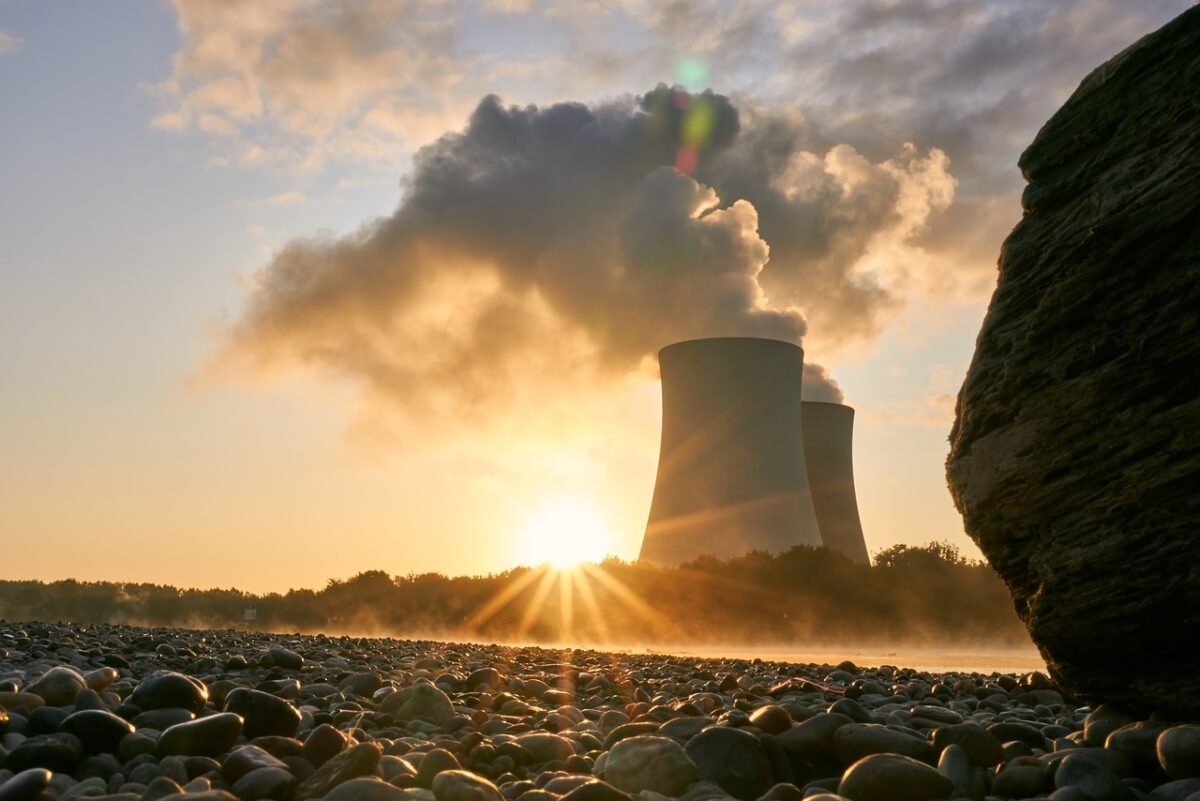Chasing profit is how we got here. This shouldn’t be the basis of the decision. If it’s the only thing we can use to drag conservatives along though, I guess it’ll have to do.
It’s not about chasing profit though, it’s about getting to net zero as quickly as possible using finite resources. Any money that goes to nuclear could be going to renewables, which would get us there more quickly.
This article is about profitability, not cost to net zero. They are very different things. It also ignores the cost of scale, go all in on say solar today and that doesn’t make more panels available, the increased demand would raise prices and suddenly its not so profitable.
Nothing is as simple and easy as people want it to be.
However, the researchers show that in terms of cost and speed, renewable energy sources have already beaten nuclear and that each investment in new nuclear plants delays decarbonization compared to investments in renewable energies. “In a decarbonizing world, delays increase CO2 emissions,” the researchers pointed out.
They talk about profit to get the attention of money people, but the ultimate goal is decarbonization. Hell, the title of the source article is “Why investing in new nuclear plants is bad for the climate”.
If people internalized that last line of yours we could get shit done. …
Any money that goes to nuclear could be going to renewables, which would get us there more quickly.
That’s a false dilemma. Nuclear and renewables provide different things, so they shouldn’t be compared directly in an “either or” comparison, and certainly not on cost. Nuclear power provides a stable baseline, so you don’t have to rely on coal/gas/diesel powered generators. Renewables cheaply but opportunistically provide power from natural sources that may not always be available but that can augment the baseline. The share of renewable energy in the mix is something engineers should figure out, not “the market”.
Also, monetary cost shouldn’t be the only concern. Some renewables have a societal cost too, for example in the amount of land that they occupy per kWh generated, or visual polution. I wouldn’t want to live within the shadow flicker of a windmill for example.
baseline
Base load. Here’s an argument that we don’t need it: https://cleantechnica.com/2022/06/28/we-dont-need-base-load-power/
There’s an interesting point buried at the end of that article: electricity quality. With batteries in the loop, supply can scale with demand almost instantly, versus the time it takes for various types of power plant to adjust output.
I wonder if this has any impact on another piece of the puzzle, high voltage direct current (HVDC) which we need to transport electricity over large distances with minimal loss.
Reading that… It basically seems to say that we can live with intermittent blackouts when wind and solar fail.
They don’t provide different things, they both provide electricity. Nuclear is only really suited to base load, whereas renewables can be spun up and down to match varying demand - however renewables are also more than capable of covering base load, because it’s all just electricity.
The only thing nuclear provides that renewables don’t is grid stability. Nuclear turbines have large rotating masses, when loads are switched on and off they keep spinning the same speed, helping to maintain voltage and frequency. Meanwhile renewables are almost all run via inverters, which use feedback loops to chase an ideal voltage and frequency, but that gives them an inherent latency when dealing with changes on the network. However, there are other ways of providing grid stability.
It’s not a windmill. It doesn’t mill anything. The technical term is Wind Turbine Generator (WTG), but usually they’re called wind turbines or just turbines. A group of turbines make up a wind farm.
Land occupied is not much of a concern when most renewables (and nuclear, for that matter) tend to be installed away from population centres. It feels like you’re grasping for reasons now.
Suffice it to say, I work in the electrical industry, and this isn’t the first report that’s come out saying renewables are cheaper, better value and quicker to build and get us to net zero when compared to nuclear. That isn’t to say nuclear isn’t important and shouldn’t be built, just that nuclear shouldn’t be a priority in pursuit of phasing out fossil fuels. At the end of the day, demand will only go up, so building a lot of renewables before building nuclear won’t exactly be going to waste. We’ll need all of it.
Renewables cannot be spun up. You have to massively over build to do that. And even then, you’re still depending on availability of sun and wind.
If you need more power than is available, it’s done with natural gas peaker plants at 10x the normal cost of electricity.
On the flip side, a stable base load of nuclear, can be spun up and down over the day to meet expected load.
That’s exactly the suggestion, over-build renewables right now to get to net zero, then fill out the generation portfolio with nuclear. The demand will only go up, so that excess renewables will eventually be used to capacity anyway. The study is laying out what the priority should be right now, when climate change has already got its foot well in the door.
Renewables can effectively be spun up or down as long as they have batteries. That way, they can usually be generating as much energy as possible regardless of demand.
is our battery tech even up to this?
Yes. There’s numerous live examples which have been in place for years (Horndale South Australia for example)
Yes. It costs less and requires less mining to use the most expensive and wasteful storage option. The only reason there aren’t more is a lack of sufficient investment in VRE required to make them useful.
Adding 1GW that runs 80% of the time with months long outages to a grid that has 10GW of power available 95% of the time and 3GW 5% of the time doesn’t fix the issue and requires charging $4000/MWh rather than merely $200/MWh to pay back your boondoggle.
All the people chanting “baseload” understand this but pretend not to.
Seriously. By this logic fossil fuels are cheaper, thus better!
This is how we get garbage like carbon credits, trying to capture the cost to the environment in dollar amounts is just more symptoms the fallacy of using economics in lieu of physics.
The question has always been what does one do when the renewables aren’t providing enough power (ex: nights, etc). The current solution is natural gas. It would be a big improvement if we would use a carbon-free source like nuclear instead.
Pumped-storage hydroelectricity is an old and proven method for load balancing intermittent power sources. Would like to see more of that as geography permits.
The “as geography permits” part is a big obstacle, unfortunately.
Actually it isn’t if you stop only looking at places that are also suitable as power plant, that is, have a big river flowing through them.
You can do pumped hydro in an old mineshaft.
Can you? To store the energy you need to pump up; to use it you need to flow back down. Where is the ‘down’ or ‘up’ from a mine shaft?
I’d also question if the volume would be worth it.
Edit: maybe you are thinking compressed air?
…the up is at the surface and the down is at the bottom of the mine shaft? I’m not talking about horizontal ones, of course. You let water in, generating power, and then, to regenerate empty space and with that the capacity to again generate power, you spend energy to pump it up.
As to volume, there’s some gigantic mineshafts, but even small ones might warrant small installations it’s not like some pipes and a pump and generator are much of an investment. Of course, don’t try that in a salt mine geology will play an important part.
And lastly: Mineshafts aren’t the only option. There’s a lot of mountains, and they have many sides, and also plateaus and valleys. Build two concrete basins, connect them via pipe, ship in water from somewhere, voila, pumped hydro storage.
I guess I wasn’t clear where on the surface the storage is. Do they still make a dam type area to store the ‘high’ water, or is it just a different part of the mine which is closer to the surface?
I was able to find some mine numbers… yeah; insane. Especially something like an open cut mine which is functionally already lake shaped.
Not in China.
That will not remotely cover baseline loads and is not without significant efficiency loss due to the pumping phase.
All commonly used forms of energy storage have some efficiency loss. Pumped storage is not perfect but my understanding is that it usually comes at a 10-25% loss, which isn’t all that shabby all things considered.
According to the article, the researchers concluded that nuclear reactors are not a good fit for that role.
Here’s an example of what can be done with 5 hours of storage. 5 hours is a 25% participation rate of V2G where the participants offer a third of their battery capacity.
If going with the (false) assumption that nuclear can hit 100% grid penetration, it would take decades to offset the carbon released by causing a single year of delay.
The lowest carbon “let’s pretend storage is impossible and go with 100% nuclear” would still start with exclusively funding VRE.
consumers may also help reduce system costs by adapting their electricity consumption to the availability of renewable energy
From the linked paper. They mention some other options for storage like batteries (plenty of environmental issues there though) but based on the quoted text I have a hard time taking this seriously if they actually expect people to change their behavior.
Plug in car. Press the “I would like to only pay $100/yr to fuel this please” button.
Later when you leave for work press the “I would like the house to be cool when I get home and also want to pay half as much for AC” button.
Buy the 1.5m wide water heater that stores 10kWh of hot water and lasts a week between heatings rather than the 70cm one that lasts a day.
Such an unconscionable burden.
I think innovation at the consumption end is going to help a lot. On Technology Connections I saw an electric induction stove that could be powered from a regular socket. It had a battery that would trickle charge throughout the day and then use the batteries to power the induction cooktops, as well as a couple of plugs. If widely deployed and in other appliances, with a little smarts that could provide power leveling at the home level.
Another solution would be adding some intelligence to water heaters. Have a temperature control valve on the output where you set the temperature, and program the water heater get to 160-180°F when electricity is cheap. This would be a thermal battery that would easily level out demand for electricity for heating water.
Or you could do thermal storage by heating a house very warm/cold prior to a large cold snap/heat wave, and letting it coast down/up to a temperature instead of heating/cooling a lot during the cold/hot weather. He’s got a video on this technique here
Here is an alternative Piped link(s): https://piped.video/watch?v=0f9GpMWdvWI
Piped is a privacy-respecting open-source alternative frontend to YouTube.
I’m open-source, check me out at GitHub.
Another solution would be adding some intelligence to water heaters. Have a temperature control valve on the output where you set the temperature, and program the water heater get to 160-180°F when electricity is cheap. This would be a thermal battery that would easily level out demand for electricity for heating water.
This has been done for close to a century in wind or run of river hydro heavy countries (as well as some coal ones).
The water heater has a buffer tank and is attached to a meter that only runs when a signal is sent across the power line. This stores about 20kWh for a 300L tank.
Modern insulation would allow going up to a few m^3 for a couple weeks’ worth.
“Not enough power from renewables? Just turn off your fridge for a few days and you’ll be fine!”
Honestly that sentiment has strong “blame the consumer” vibes that seems to pervade climate arguments.
Sure, people can reduce consumption, but at best its a stopgap, not a solution.
There’s stuff like heaters and to a degree things like washing machines that can shape the time they’re active to whenever there’s a lull.
Consider Britain: Each time the BBC runs a popular show you get an energy usage spike once it’s over because people are getting up and make themselves a cuppa. Doesn’t really make sense to run the heater in the tank for your shower at the same time, or charge your car, that can wait a bit.
The growing idea is to just have a shit load of renewables, everywhere. The wind is always blowing somewhere, and the sun shines through the clouds. If you have a ridiculous excess total capacity then even when you’re running at limited capacity you could still cover the demand. Basically, most of our renewable infrastructure would actually be curtailed or offline a lot of the time.
And that opens up opportunities for energy intensive industries like aluminium or hydrogen production to run whilst there’s an excess of energy
I’m all for green hydrogen production, it’s using hydrogen in place of fossil fuels that bothers me. We already have a shit load of demand for hydrogen from industrial uses, and it would take 3x the world’s total renewable capacity in 2019, dedicated solely to hydrogen production, to meet this with green hydrogen. If we start adding transportation into that demand we’ll never make it, and it will be far less efficient than other energy sources (eg batteries).
So yeah, we should have green hydrogen production, but we shouldn’t listen to those same people when they say they think it should also be used for transportation. That’s just trying to increase the size of the market to increase profits.
Hydrogen works well with a renewable grids because you can take advantage of the times there is excess energy production so that power doesn’t just go to waste.
We do need to be careful because hydrogen is often sold as a pipe dream by gas companies to convince us to use gas (e.g. “this new gas turbine power plant can be converted to hydrogen”, even though that’d be a workload less efficient than fuel cells).
As for its use in transport, it looks like battery electric vehicles have won that battle for personal vehicles. Both have their advantages but in practice there are few enough fuel stations for hydrogen and enough chargers that that’s not going to flip.
However, batteries are entirely unsuitable to long distance, high load transport like trucks. Ideally they’d be replaced by rail, but that’s not happening anytime soon in many places so hydrogen likely will be the solution there.
We have to start looking at personal renewables more? Each home could have their own small windmill or solar panel. Let’s point in that direction.
Removed by mod
deleted by creator
Those potentially have the same issue. The solution to filling the gaps in production from renewable sources is not necessarily more panels or more windmills, it’s having energy storage somewhere to keep surplus energy when it’s being produced (e.g. during the day, or when the wind is blowing) available to be used when it’s not.
So in your example, each home could also have its own battery bank. Or, a larger battery bank could be placed somewhere on the electricity grid.
It could be a wall of small wind wheels for the home and yes a stored battery location on-site. A friend of mine took us to see their friend who had their own small(ish) wind turbine and it only had to have 10 large batteries. That was years ago.
If your appliances are efficient and your usage is moderate, you don’t need much to generate enough power to run your home. And, provided you don’t also need to charge an EV in the garage…
The 8 Bit Guy just did a video detailing his setup, which is all solar panel driven, and he rode out a day in the recent Texas heat running his air conditioners and so forth just on his solar panels and stored backup power. He has a comparatively rinky-dink number of panels, just a few over his little side porch and a couple more hung on his fence.
I imagine someone with one side of their roof paneled plus or minus a small windmill could easily power their own home as well as provide a surplus to charge a battery bank.
Just to add to this, we had 14 panels installed with a powerwall on an Easy/slightly NE, West/slightly SW roof at 55°Northern latitude. In the 7 weeks since we had them installed, every day we’ve made more than enough power for our usage. On more than 60% of the days so far we’ve filled the battery too and had to put up to 7kwh into my car. The worst days we’ve still made enough to power our house for more than 24 hours. This is genuinely way more than I ever expected to make and if we get a fraction of that through winter we’ll not need to charge the battery from off peak electricity as much as I had planned.
Now, granted this far north we’ll cycle from one extreme to the other but it seems like such a simple win to have panels for when you can and storage to smooth out usage on everything we can. You can get a surprising amount of power from just a “bright” day, even with cloud cover.
55 degrees North? Damn, we’re in Seattle and we’re at 47.6 so that’s some seriously lacking sun compared to the rest of the US. That’s incredible news.
That’s exactly what I’m talking about, I really hope it catches on.
Here is an alternative Piped link(s): https://piped.video/watch?v=W3lSjuLAAVQ
Piped is a privacy-respecting open-source alternative frontend to YouTube.
I’m open-source, check me out at GitHub.
What makes you think personal renewable are going to be more efficient than large scale renewables? The sun doesn’t magically shine in the middle of the night on personal homes, the wind doesn’t magically blow only in residential areas…
deleted by creator
Nuclear is a terrible fit for peaker plants, that’s not how it works. If it isn’t selling energy at as close to 100% of the time as is feasible it’s losing money.
While I agree completely, it is troublesome that you, BombOmOm, are saying this… :/ username checks no fly list out.
Sometimes, a kinetic response is the only reasonable reaction. ;p Asking nicely doesn’t stop a Russian war of conquest.
Nuclear is not, and cannot be, a gap coverage solution. Due to xenon/iodine poisoning and decay heat management you need to keep a reactor critical as long as possible to be economical. That’s independent of the problem of keeping the water hot that fossil fuel generators share. You can’t just turn a reactor on and off.
It can provide a baseload though where solar can provide extra power during the heat for places where the summer and days are the power intensive part, rather than winter and nights. You still need a short-term stop gap as the sun sets but it’s still hot out, but even if that was just powered by NG it would be a huge step forward. Adding greener energy storage options to store extra power nuclear or wind could generate overnight would be better.
Btw, could a small percent of nuclear reactors be turned on/off seasonally, potentially transporting fuel between the north in the winter and the south in the summer?
Yes, but if you spend the money making a reactor, you really should just use it. Uranium is pretty cheap, it’s the reactor that’s expensive.
Keep the reactors running to avoid that issue. As long as they are providing enough power when the renewables aren’t, we successfully cut out natural gas from the power grid.
The renewables-only crowd is just ignorant about this simple fact.
The future of energy will be dominated by solar and nuclear power. With hydro, geothermal and wind playing supporting roles, depending on geography.
The only question is, how much fossil fuels do we burn until then?
Those who oppose nuclear are really just in favour of burning fossil fuels in the interim. But the inevitable switch to nuclear will come as fossil fuels are depleted.
Nature has given us the atom as the most dense and durable way to store energy. That will never change.
Typical energy density of ore in a new uranium mine burned in an LWR is about the same of coal.
All of the economic/not too damaging stuff together would power the world for about 3 years.
Profitability is so much not the point here and also, there’s no reason for different energy production sources (especially ones that are base power vs incidental power) to be in conflict. Do both of them.
Yeah exactly. None of it is profitable if you can’t meet instant demand changes at any time of day. Build the nukes to meet full demand needs and supplement them with “more profitable” options for redundancy.
K, but this isn’t about profits. This is about not destroying the environment, which nuclear can help with (you know if nobody bombs the plant)
Everything is about profits. Otherwise we wouldn’t even be in this mess.
But it’s also about cost. Nuclear is far more expensive upfront, more expensive to maintain, and more expensive to decommission. Cheap, agile renewables will be an easier option for the vast majority of the planet
We would be really stupid to worry about money when trying to save the planet. But, what did I know, I’m just some guy on the internet
Financiers tend to worry about money, yes.
First option: a wind/solar plant with costs that aren’t going to increase substantially, power being sold within a couple of years therefore repayments will begin quickly.
Second option: a nuclear proposal - massive costs upfront, that will inevitably skyrocket while the completion date slips and slips, and power being sold 10-15 year in the future so repayments are a long way off.
It’s not a difficult choice.
If your argument is that we should nationalize the energy sector so government can get involved more directly to mitigate financing issues, sure. We both know that’s not going to happen.
How does one provide power when the renewables don’t provide enough power (nights, etc)? Our current solution is natural gas. Nuclear is a huge step up as a carbon-free provider.
Storage, there are many options. Pumped hydro is great for places with elevation change, molten salt is great for desert climates. Batteries, green hydrogen, compressed gas, etc.
We’ve been storing energy for thousands of years. It’s not difficult in the way nuclear fusion, SMRs, or thorium are difficult.
We’re also moving towards EVs. I’d like to see investment in using a fleet of connected EVs as a giant battery. Your energy company can pay you for making 10-15% of your EV battery available for grid storage and you can opt out if you need that extra range for a trip.
The largest battery on the planet would power my workplace for less than two hours- if it could meet the instant demand, which it cannot.
I’m all for energy storage, but I realise there’s a lot of work to do.
For processes like that though, nuclear would make the electricity too expensive to be economic, renewables wouldn’t.
1,200MW isn’t enough? Where do you work?
Why do you think batteries can’t meet instant demand? That’s kind of their whole thing.
The article talks about the coming droughts and water shortages. Pumped hydro is nice, if you have water.
There’s evaporation, which can be mitigated by floating solar panels, but pumped hydro is a closed system, it doesn’t consume water.
You save the water in a hole, then pump it back and forth. You can cover it with PV to stop evaporation
This is also good for the droughts as you have emergency water.
We*rich countries would be really stupid to worry about money when trying to save the planet.There’s a lot of world outside the US, Europe, and China.
This is everybody’s problem dude.
Correct. Which is why cheap and agile renewables will remain a good option for less wealthy countries.
deleted by creator
@N1cknamed @NocturnalMorning be carful about time scale when talking about rentrability. In short term a few reneable is certainly cheaper, but nuclear reactor will outlive the ENR. For governement, long term rentability may be more important than short term one. Also, governement consider other parameters (jobs, resillience, public opinion, ghg emmissions? …)
More profitable AND safer. Humans are too stupid, lazy and bureaucratic to use nuclear.
To be fair though per terrawatt hour nuclear is safer than wind power and only beat in safety by solar.
Not actually safer, per kilowatt hour though.
If we measured the amount of destruction to our environment that fossil fuels cost long-term I bet they’d stop being profitable really quick.
If we had an energy system owned by the people and not ran for profits, nuclear would be a viable, and probably even the preferred, option. We do not. We’re probably going to have to fix that to get a practical and reliable clean energy grid.
What do you do with the waste in that scenario? Who pays for that? Or for insurance?
No, it would just bankrupt the state. Just because something is state owned, doesn’t mean the cost vanishes.
Infrastructure in this country is already so heavily subsidized by the federal government (and state, if you live somewhere that actually cares about your well-being) that we’re already pretty much paying for it all.
Profits are what is earned after expenses. It wouldn’t bankrupt a state to run energy infrastructure at cost.
Profit doesn’t equal good. Renewables take a lot of materials and fabrication to upkeep. Im sure theres more money to be made in renewable than there is in nuclear, that doesn’t imply one is better than the other.
What about when the grid is almost entirely renewables? Is nuclear cheaper than just storage? What about storage one it’s already been implemented to the point of resource scarcity?
1kg of lithium produces about 10kWh of storage for 15-20 years. 3-12 hours of storage is plenty for a >95% VRE grid.
1kg of uranium produces about 750W for 6 years.
There are about 20 million tonnes of conventional lithium economically accessible reserves (and it has only been of economic interest for a short time).
There are about 10 million tonnes of reasonably assured accessible uranium (not reserves, stuff assumed to exist). It has had many boom/bust cycles of prospecting.
Lithium batteries are not even being proposed as the main grid storage method.
Cobalt is the difficult one, especially with the child workers mining it.
Everyone seems to be focused on electricity production, but ammonia production (ie nitrogen fixation) for fertilizer is often overlooked. Right now it is accomplished mostly with natural gas. If we’re supposed to do it instead with wind and solar, we’re going to have to rely on simple and inefficient electrolysis of water to generate the hydrogen needed for the Haber process. Nuclear power plants have the advange of producing very high temperature steam, which allows for high temperature electrolysis, which is more efficient.
When you consider our fertilizer needs, it becomes clearer that nuclear power will have to play the predominant role in the transition away from fossil fuels.
No on all fronts.
The only reactor designs with any sort of history don’t produce steam at high enough temperature for the sulfur cycle and haber process.
The steam they do produce costs more per kWh thermal than a kWh electric from renewables with firming so is more economic to produce with a resistor.
Mirrors exist. Point one at a rock somewhere sunny and you have a source of high temperature heat.
Direct nitrogen electrolysis is better than all these options. It’s had very little research but the catalysts are much more abundant than hydrogen electrolysers and higher efficiencies are possible.
Using fertilizer at all has a huge emissions footprint (much bigger than producing it). The correct path here is regenerative agriculture, precision fermentation and reducing the amount of farmland needed by stopping beef. Nitrogen electrolysis is a good bonus on top of this.
One way or another, I’m pretty sure that we need fertilizer. What is the source of GHG if the fertilizer is produced without natural gas or other fossil fuels?
NO2, methane from byproduct/digestion, soil carbon release from land overuse. Downstream methane release due to nitrate pollution.
The overwhelming majority of cropland is for “biofuel”, industrial chemicals and animal feed.
Industrial scale regenerative agriculture has lower yields in the short term, but doesn’t emit NO2 and leave behind a dust bowl (requiring clearing a new forest).
Eating crops directly rather than feeding cows is far more effective than changing fertilizer source. Eating organic crops uses a small fraction of the crop land that eating beef fed on intensively grown corn does.
Biointensive methods have many times the yield as industrial agriculture but are very labour intensive – automating them would save a lot more emissions.
Precision fermentation uses a tiny fraction of the land per unit of protein/nutrients.
Eating crops directly rather than feeding cows is far more effective than changing fertilizer source.
cows eat a lot of grass, and usually from land that isn’t suitable for crops. the silage they get is mostly parts of plants that people can’t or won’t eat.
Paltering.
Corn and soy grown for the purpose of large animal feed exceeds the amount of cropland used directly for human consumption in areas where <20% of calories and protein come from red meat.
almost all soy (about 85%) is crushed for oil for human use. the vast majority of what’s fed to animals is the industrial waste from that process.
only 7% is fed directly to animals.
i don’t know the numbers for corn, but i do know that globally, about 2/3 of all crop calories go to people.
Yes, we’re definitely going to have to set up more nuclear power plants specifically to make fertilizer. Nuclear heads are literally brain dead
Fertilizer which they can’t make because the steam isn’t hot enough.
Every single pro nuclear argument is a fractal of terrible ideas and gaslighting.
I wonder how this determination is affected by the boondoggle that is the public funding of nuke plant construction with huge overruns paid for by consumers.
It’s getting ose to the point where even if you are handed one it’s more cost effective to build a wind farm and let it sit.
A MWh of wind is about $33 and O&M for a MWh of nuclear is about $30.
If renewables were subject to the same regulatory ratchet we impose on nuclear, they wouldn’t be profitable either. Basically, whenever they figure out how to operate cheaply and efficiently enough while meeting existing safety requirements, regulators react by toughening the requirements.
When you demand free insurance from someone they get to set the risk profile.
Tell you what. You put up collateral equal to the value of any nearby city and everything in it, and you can stop ALARA.
Also even with that it’s still bullshit. Nuclear had a higher negative learning rate before ALARA and is still horrifically expensive outside the US.
Also the suggestion that wind and solar aren’t subject to more extreme regulation on potential harms is even more ridiculous.
So first off, the source of this article being pv-magazine makes me immediately skeptical about unbiased reporting. This part really gets me though:
The availability of this electrical source is also questioned in view of the increasingly frequent droughts expected in the coming years, causing, in particular, low river flows and therefore associated problems of cooling power plants.
And availability is not a problem with renewables then? If not the central problem? Hydroelectric is probably the most reliable of the renewables, but then we have the aforementioned problem of low river flows. Droughts could even affect pumped hydro: a much-touted solution to availability problems with wind and solar. For crying out loud, present both sides of the argument fairly! /end rant
At any rate, I can get on board the idea that in terms of adding new generating capacity, renewables may be the most competitive option at the moment? They have come a long way in a short time, though they still face major challenges on the energy storage front.
But in terms of getting away from existing fossil fuel-based power generation, is nuclear not an attractive option? The infrastructure is already there, and would essentially have to be largely abandoned as sunken assets by power utilities switching to something like wind or solar right?
Consider your average coal plant. It is a centralized heat source powering steam turbines connected to large generators and a giant transformer station feeding power out over a network of high voltage transmission lines.
What is a nuclear plant then? It is a centralized heat source powering steam turbines connected to large generators and a giant transformer station feeding power out over a network of high voltage transmission lines. I’m thinking at least some of the existing hardware could be repurposed for nuclear to leverage what already exists? Am I wrong?
Droughts could even affect pumped hydro: a much-touted solution to availability problems with wind and solar. For crying out loud, present both sides of the argument fairly! /end rant
Pumped hydro doesn’t consume nearly as much water as a thermal generator. Especially if you cover the reservoirs. It also gives you an emergency backup.
Would you prefer:
Option A where you immediately have no power when the river gets low,
Or option B where you still have power after the river gets low, but can also choose to give up the ability to have some of your power at the end of a week long cloudy period in exchange for water?
Really interesting and quite easy to read article. In fact, the french energy policy is to invest in new “little” nuclear plants. I’m not sure our politics will consider these scientifical comments…
They still seem to handwave away the issue of baseload, which is entirely frustrating. As I seem to understand it, it’s just a 1:1 comparison of costs.
They use nebulous phrases like “Flexibility is more important” and point to batteries or energy saving methods getting cheaper, without actually including it in the comparison.
Although if it’s true EU plants were randomly closed from production 50% of the time baseload doesn’t really make a difference I guess.
“Baseload generator” isn’t a useful concept. And grid reliability (which is a useful concept) is thought about. It just doesn’t fit into a soundbite like winddon’tblowsundon’tshine.
Here’s an example of a full plan https://aemo.com.au/en/energy-systems/major-publications/integrated-system-plan-isp/2022-integrated-system-plan-isp
Or a simpler analysis on the same grid: https://reneweconomy.com.au/a-near-100pct-renewable-grid-for-australia-is-feasible-and-affordable-with-just-a-few-hours-of-storage/
For reference, 5kWh home batteries currently retail for about $1300 so this would add <10% to the capital cost compared to recent nuclear projects. Pumped hydro is about half the price per capacity, but a bit more per watt. The former is dropping at 10-30% per year, so by the time a nuclear plant is finished, storage cost would be negligible.
Here’s a broad overview of a slightly simplified model https://www.nature.com/articles/s41467-021-26355-z demonstrating similar is possible everywhere.
Even in the counterfactual case where the ~5% of “other” generation is only possible with fossil fuel, focusing on it is incredibly myopic because the resources spent on that 1% of global emissions could instead be used for the other 70% which isn’t from electricity and has different reliability constraints.
Doesn’t the Australian model ask for a 4-6% fossil or other fuel input? I don’t see how base load, nuclear or other fuels aren’t relevant to discuss, as nucleur is like 4% of global output right now.
Four points:
The profile of other is short spikes 5-100 hours a few times a year.
1 year of delay is equivalent to 20 years of exclusively using fossil fuels for “other”.
It’s not even obvious that adding nuclear reactors would reduce this because they’re so geographically and temporally inflexible. France has 63GW of nuclear capacity, <45GW of average load and 61GW of winter peak load with vast amounts of storage available via interconnect to hydro countries. They still use 5% gas on top of the rest of the “other” (which is about 10-25GW).
5% of other from gas adds about 20g CO2e/kg per kWh to the total. Less than the margin between different uranium sources.
Running 40% of the capacity 10% of the time puts your nuclear energy in the realm of $1-3/kWh. The list of ways of generating or storing 6% of your energy for <$1/kWh is basically endless.
That’s about 4-8TW of capacity worldwide. 1kg of uranium is good for fuelling about 750W of reactor on a 6 year fuel cycle. Loading those reactors would require digging up all of the known and assumed-to-exist uranium immediately.
Nuclear is an irrelevant distraction being pushed by those who know it will not work. You only have to glance at the policy history or donor base of the politicians pushing for it in Sweden, Canada, Australia, UK, Poland, etc etc or the media channels pushing it to see how obvious it is that it’s fossil fuel propaganda.
It is obviously obviously true that it’s a non-solution. It fails on every single metric. All of the talking points about alleged advantages are the opposite of the truth without exception.
I don’t know enough about the topic to have an argument against, just trying to educate myself. I am curious how you would respond to this person in another thread:
https://jlai.lu/comment/1510040
I assume your response would be essentially similar to your previous comment. That we can develop the battery tech and it would be easier just to use fossil fuels as a bridge anyway?
100% renewable energy is not possible on our current electrical grids. We usually use more energy at night where renewable does not cover our peak energy requirements, therefore, as a carbon neutral energy source nuclear covers that peak perfectly.
alternatively, address the shortcomings of the power grid
Instead of “alternatively” let’s say “in addition”. We’re not going to solve anything with a single solution we need nuclear, we need solar and other renewables, and we need to upgrade the grid. All at the same time.
Solar isn’t the only renewable energy, and not even the only one you can install per household. Geothermal never stops, can be installed in your lawn, and has almost zero maintenance. Wave generation and offshore wind farms also provide round the clock energy.
Geothermal never stops, can be installed in your lawn, and has almost zero maintenance
If you’re talking residential geothermal, that won’t generate electricity for your home. It can be used for HVAC and water heating though. It isn’t zero maintenance, and for most people it is pretty expensive (because they don’t have enough land to use the cheaper method for laying the pipes in the ground. Also, call it what it is - Ground-sourced heat pump. Average install price is $30k-$70k.
In many latitudes Air-sourced heat pumps are much much less expensive and perform nearly as well.
I’m hopeful to see cheap to purchase, install, and maintain Ground-sourced heat pump (residential Geothermal) but its not hear yet.

























